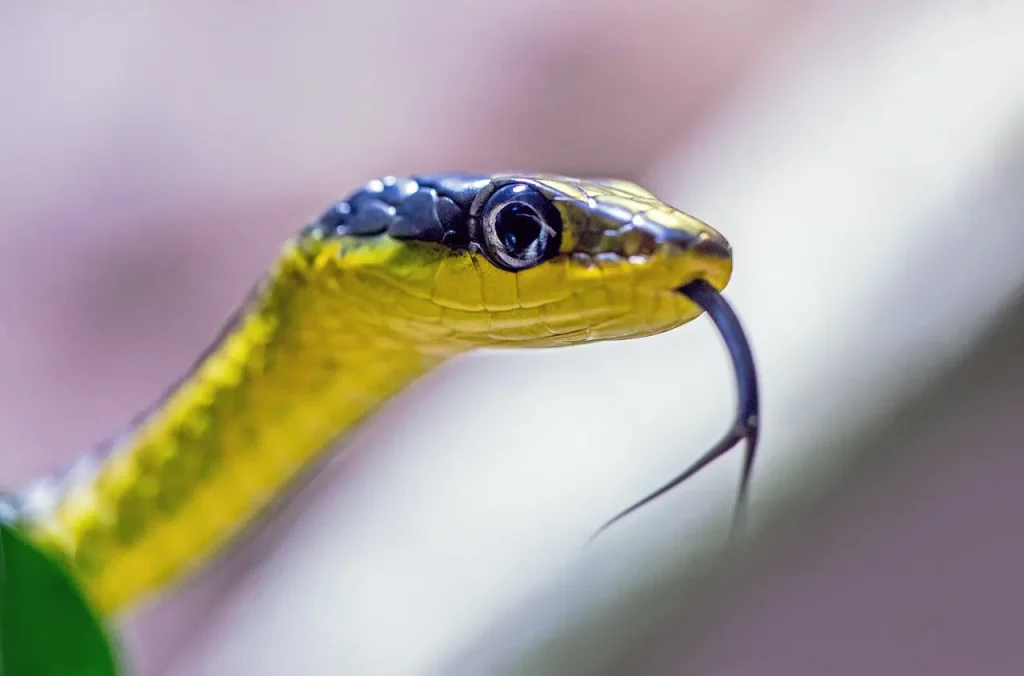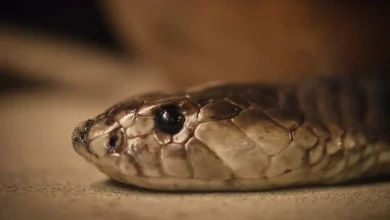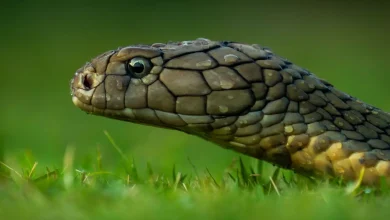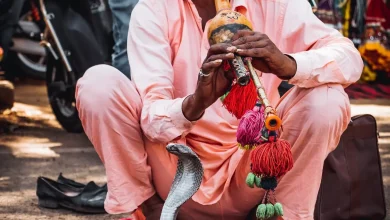Golden Tree Snake (Chrysopelea ornata)
Golden Tree Snake (Chrysopelea ornata) Common in Thailand
The Golden Tree Snake (Chrysopelea ornata)
These green snakes are like the road runner of snakes – they are super fast, thin, and agile. They can climb trees and bushes faster than any other snake I’ve seen, and they are wicked fast on the strike. Yesterday I saw one strike so fast I couldn’t see it. That’s fast.
These are very common snakes here in Thailand; they are one of the top 5 snakes you are likely to see in this country. On average, I see 1-2 a week – without looking for them. They are constantly snaking across the roads.
I have given chase about a dozen times and was only fast enough to catch them 4 out of 12 times. Once they hit the green brush – forget it, man – they are impossible to find or catch if you do see them. So, the best chance to catch this snake is on the road if you can jump off your motorcycle or out of your vehicle fast enough.

Golden Tree Snake Overview
These snakes bite fast and often, and they do have venom, but the venom is only toxic to frogs, lizards, and other small animals – not usually humans. If you happen to be allergic to the venom, you could still go into shock, though I’ve not seen any cases of this in the literature.
The Golden Tree Snake (Chrysopelea ornata) is a widely distributed species of gliding serpent native to South and Southeast Asia. Natural distribution of the snake includes India, Nepal, Sri Lanka, Bangladesh, southern China, Myanmar, Thailand, Laos, Cambodia, Vietnam and northern Peninsular Malaysia. Notably, it does not occur in the Philippines.
There are two subspecies recognised. The Southeast Asian population, Chrysopelea Ornata Ornatissima, is distinguished from its Indian counterparts through subtle morphological differences and pattern variations.
The Golden Tree Snake is not native to Singapore. Ornata is now a well-established introduced species. It is found in secondary scrubland and semi-urban parks, especially in areas where there are scattered trees. The presence of this species in Singapore raises the question of how it got there. Accidental transport via horticultural or construction materials could be one possible explanation.

This species spends most of its time in trees. It is a very agile climber and can navigate slender branches easily. It can glide from one tree to another by flattening the body and launching from elevated perches, just like other members of Chrysopelea.
Chrysopelea Ornata has a diverse diet that includes lizards (such as bats, rodents, and mice), birds, and sometimes other snakes. This opportunistic strategy is common among arboreal colubrids and highlights the species’ versatility.
Chrysopelea ornata has a greenish-yellow background, with obliquely spaced black bars. This pattern helps to camouflage the snake amongst foliage. This snake can be mistaken for the Paradise Tree Snake, especially its dominant yellow and black morph. However, C. Ornata is distinguished from C. paradisi by its narrow, horizontal lines that run across the dorsal scales. Paradisi is characterised by more irregular or reticulated markings on the dorsal scales.
More information is available at the Chrysopelea ornata ornatissima fact sheet ->
We also have featured this very common green snake in our Photos of Common Thailand Snakes ebook, FREE for you here.





Many, many thanks for this website which is extremely useful and well-written. Have used it to identify the 2 snakes I have seen here so far in the last 3 months. They were, I am pretty sure now an Indo-chinese Rat Snake and a very beautiful Golden Tree Snake. The latter in particular was breathtakingly beautiful and elegant! It really took my breath away and excited an interest in snakes.
I will in future, use this website to educate the ownner and his wife about not killing the snakes they find on the property, which unfortunately I am told, they have done in the past. In addition, I shall steer all the guests towards it when they arrive here, particularly at the orientation meetings.
You are more than welcome to come and stay here for a few days free of charge, during which time hopefully you could share a little bit of your local snake knowledge with us!
With very best wishes,
Ashoker (from the UK)
Thank you Vern. We found a beautiful specimen CHRYSOPELEA ORNATA ORNATISSIMA here in northern Thailand. Before I release it, I wanted to make sure that it’s not dangerous. (That determines where I release it.)
Dave
Best to release it in the exact place you found it because many snakes die when not released at the same spot. Cheers!
We saw this snake on Ko Samui island
OK! Chrysopelea ornata most likely – golden tree snake. Mildly venomous, but not dangerous for humans or larger pets.